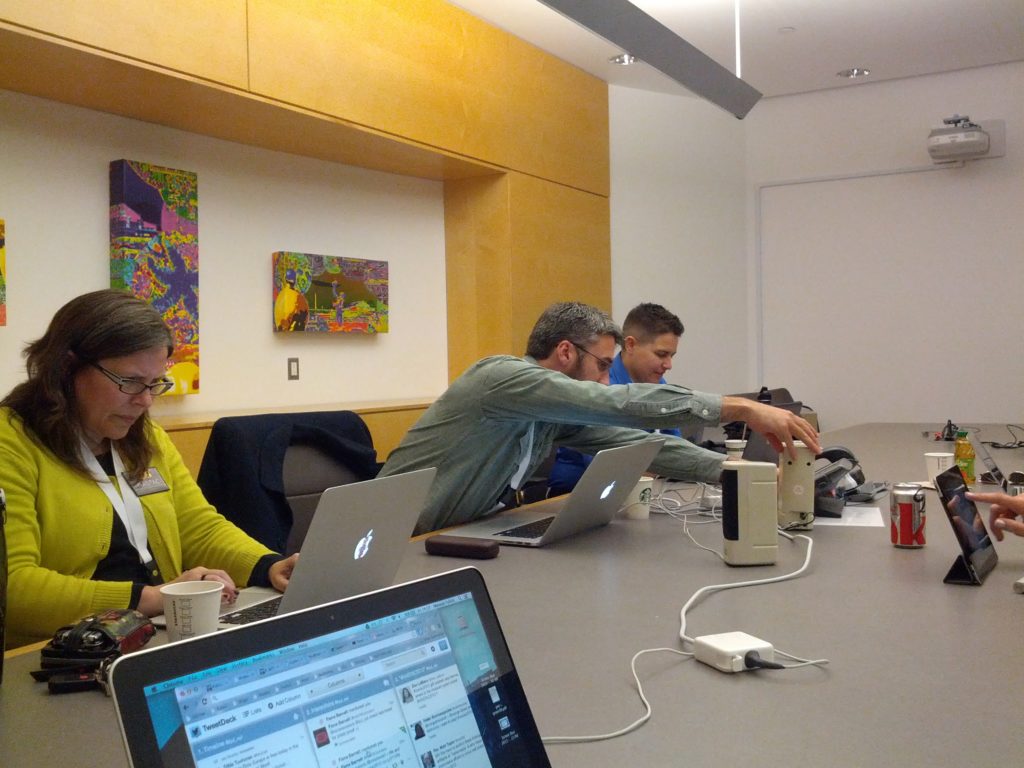Working with prospective teachers led to this post about what teaching “looks” like, how we imagine it should look, and how our expectations inform our assumptions about learning. Here is a link to the original post from February 9, 2012: Teaching the ineffable.
Recently I’ve been re-thinking (again!) about what it is that we (citizens, persons, societies) expect from education and how this related to the nature of knowledge and learning. At the moment I’m working with a small group of teacher candidates (TCs) in a concurrent B.Ed program. The course, which is a requirement for the students to progress in the program, is structured around attending a weekly placement at a community organization.
The idea behind the practicum is that TCs can encounter new kinds of experience, knowledge and relationships through their placements. Often the placements don’t involve what would normally be seen as “teaching,” and they usually don’t happen in schools; this is an attempt to unbind the idea of teaching-relevant experience and knowledge from what is most evidently associated with institutional environments, i.e. the school and the classroom. Learning happens everywhere; the school walls don’t define the space of our educational experiences. The community and the city, in turn, become sources of knowledge from which schools/teachers can learn to better understand, engage and include students and families.
What seems to be the case with many students is that they’ve inherited a blinkered view of what kind of experience “counts” towards one’s teaching practice, and of where and how this experience is to be acquired. This idea is entirely reasonable considering the systemic contexts in which most people encounter education and teaching at the primary and secondary levels. “Learning,” to many of us, is something long associated with formal education rather than with the everyday interactions and encounters that happen around the community and elsewhere. But children (and adults) learn everywhere, and that informal knowledge is something that shapes people’s experiences in formal settings.
Nothing about this approach feels easy. Many undergraduate students are still very “close” to their own experiences of education in the public primary and secondary system, which shape their expectations of the B.Ed. They’re also experiencing the pressure of professionalization within an explicitly defined field, so naturally they’re seeking out what will help them to fit into the system (not what will problematize the profession itself). Without professional skills, they won’t find employment. And I have my own challenges to face: how do we work within — and work to expand — the parameters I just described? How does one assess engagement, social justice, ethics, reflexivity, or the ever-elusive “critical thinking”? What happens when the assignments have no fixed value as part of a grade?
I use the example of TCs because it’s readily available to me, but I would say the dilemma about motivation and the pursuit of “relevant knowledge” is a version of what’s experienced by many undergraduate students (and by the faculty who teach them). It informs how students pick their classes and academic programs, and it’s directly connected to what each of us imagines we will need to go forth and succeed in the wide world. What I’ve noticed is that the quest for only what is immediately or obviously relevant is usually accompanied by an instrumentalist view of learning as well: “how many pages should I write, how many sources must I use, for what percentage of my grade?
Our program strives to foster reflexivity between practical experience and theoretical questioning. Philosophically, this approach is not new: Alfred North Whitehead argued in 1929 that “ideas that are merely received into the mind without being utilized, or tested, or thrown into fresh combinations” are “inert”; John Dewey advocated a kind of problem-based/experiential approach over 100 years ago. Knowledge is in itself an experience, one that must be inhabited; it is a house we build for ourselves. But knowing about something takes work. Often a lot of effort is required not only to make contact with knowledge but also to “make it one’s own”, a part of oneself that goes beyond memorization and regurgitation. For example, we all know that having “done the readings” for class is not the same as having an understanding of what an author or theorist is really saying.
As educators we can only help students to a certain point — the point of interpretation beyond which their own motivation must carry them. Until they’ve had that experience of knowledge, it’s very difficult to explain the “goal” of learning beyond what seems technically useful, and to show that moments of deep understanding can be life-altering. Perhaps it’s true as Whitehead stated, that “in education, as elsewhere, the broad primrose path leads to a nasty place”-? And if the thorny route is the one that takes us where we want to go, how do we convince students that what lies at the end is worth the walking?


